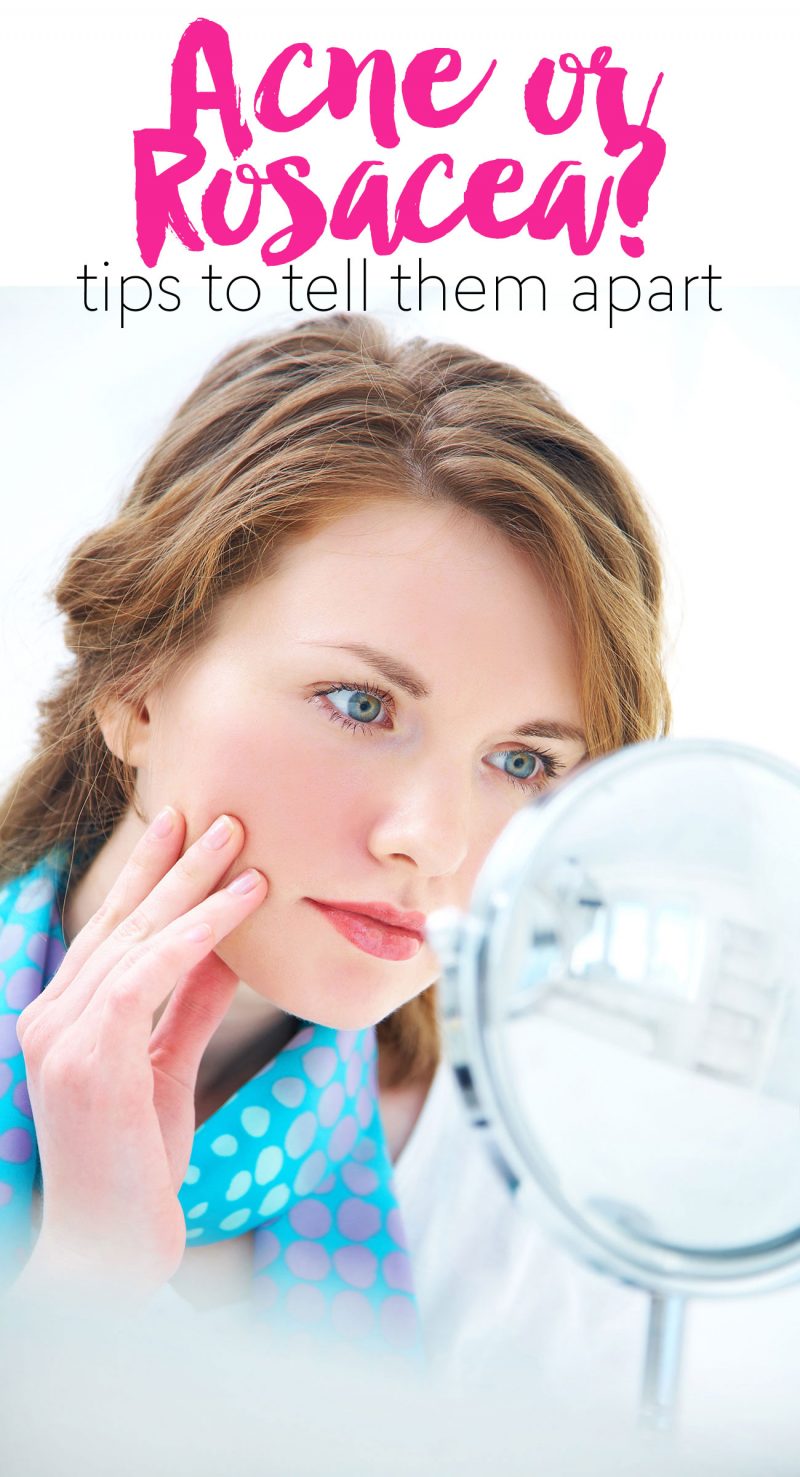I’m a typical rosacea sufferer. I had acne as a teenager, which finally cleared up in my early 20s, to my great joy! I was very happy to have (mostly) clear skin with only occasional blemishes. But in my mid-30s, the frequency of my blemishes changed. Instead of flares of blemishes, I was getting blemishes all month long. Using my normal acne treatments didn’t seem to be helping, and instead of a pimple on my chin, I had a big bump on my cheek.
I had a few other skin issues that I didn’t think were related to my increase in acne. Using a new skin care product could leave my skin tingling and red for hours afterwards. I also noticed that my face had a red flush to it, which hadn’t been present previously. I wasn’t dealing with acne any longer, instead I had separately developed rosacea and my approach to my skin needed to change completely.
It is very common for rosacea sufferers to think that they are dealing with acne, only to become frustrated when their treatments don’t work. “Acne and rosacea are often confused because they share common features such as bumps and pimples on the face,” shares Dr. Doris Day, a board certified dermatologist and Galderma consultant in New York City.
There are a few key features that can help you decide if your skin care troubles are due to acne or rosacea.
1. When Did It Start?
Acne typically starts in your teenage years and may persist with fluctuations in your symptoms for years. A big change or increase in your blemishes in your thirties is more typical of rosacea. “Rosacea is typically seen after the age of 30,” says Dr. Day.
2. Where is it?
Acne primarily affects the face, you might have a blemish on your chin and another near your hairline for example, and it can also affect the back, chest and shoulders. Rosacea typically “is concentrated in the central region of the face, usually the cheeks and the nose,” explains Dr. Day.
3. Your Face Is Sensitive
If you notice that your face is stinging or burning at times, you likely do not have regular acne. The increased sensitivity seen with rosacea can be in response to a particular skin care product, or simply a change in the weather.
4. You Know What Triggers It
While you may have some known triggers for blemishes, in particular fluctuations in hormones during your monthly cycle, the triggers are more varied and predictable when you have rosacea. Dr. Day says that rosacea “has known triggers like stress, alcohol, spicy foods and extremes in temperature.”
5. Your Face is Red All Over
A few blemishes on my face can make me feel like my face is red and irritated, but there is a difference between redness only at the site of a blemish and redness all over the face as seen with rosacea. Rosacea can result in flushing, persistent facial redness, and even visible blood vessels. None of these are seen in acne.
“If you are unsure whether you have acne or rosacea, you should visit a dermatologist for an accurate diagnosis and tailored treatment regimen,” says Dr. Day. A dermatologist will be able to prescribe medications to help treat your skin as well as advise you on any skin care routine and lifestyle changes you should make to optimize your skin’s health.


 I’m a doctor, a mommy and a bit of a beauty addict. If you let me, I can take 2 hours to get ready in the morning. Really. I'm on a quest for faster beauty that works!
I’m a doctor, a mommy and a bit of a beauty addict. If you let me, I can take 2 hours to get ready in the morning. Really. I'm on a quest for faster beauty that works!